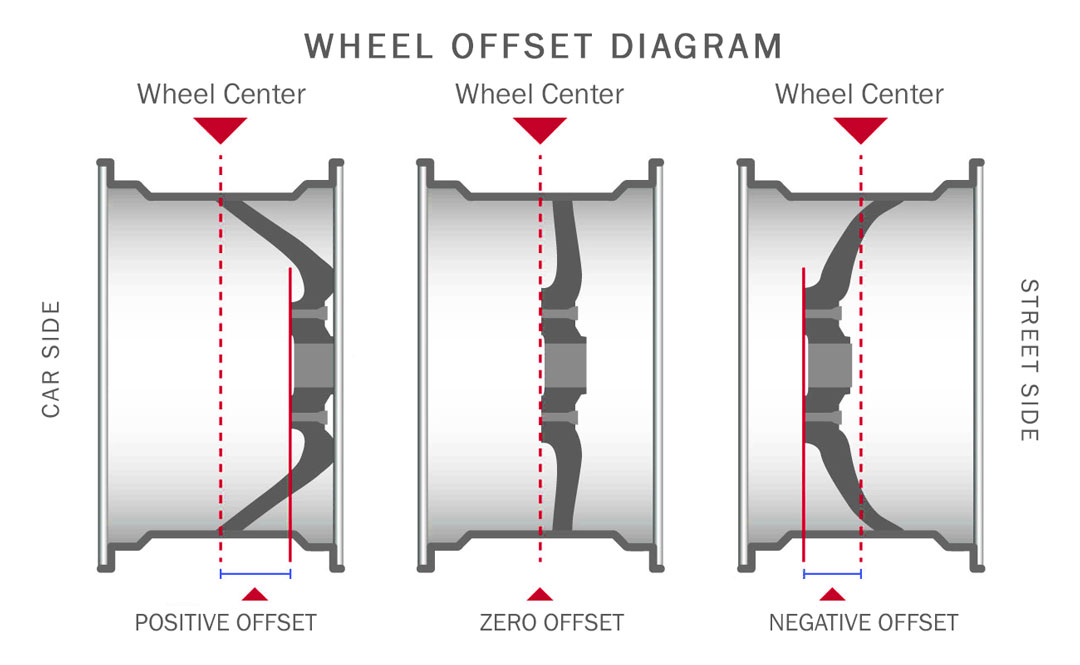
Understanding wheel offset and backspacing is crucial for optimizing your side-by-side (SxS) vehicle's performance and aesthetics. These measurements determine how your wheels align with the hub and influence factors like handling, stability, and clearance.
Wheel Offset
Wheel offset refers to the distance between the wheel's mounting surface and its centerline, measured in millimeters. This measurement affects how the wheel sits in relation to the vehicle's suspension and fenders.
-
Positive Offset: The mounting surface is closer to the wheel's outer edge, positioning the wheel further inward. This setup is common in many OEM configurations and can enhance stability but may reduce the vehicle's track width.
-
Negative Offset: The mounting surface is closer to the wheel's inner edge, pushing the wheel outward. This creates a wider stance, potentially improving handling and providing a more aggressive appearance. However, excessive negative offset can strain suspension components and affect steering dynamics.
Backspacing
Backspacing measures the distance from the wheel's mounting surface to its rear edge, typically in inches. It indicates how far the wheel extends toward the vehicle's interior.
- Calculating Backspacing: Lay the wheel flat on its front face, place a straight edge across the back rim, and measure the distance from the straight edge to the mounting surface. Adequate backspacing ensures sufficient clearance for suspension, brakes, and steering components.
The Interplay Between Offset and Backspacing
While both measurements relate to wheel positioning, offset and backspacing offer different perspectives. Offset provides a standardized metric measurement, whereas backspacing offers a more visual inch-based reference. Understanding both helps in selecting wheels that fit correctly and perform optimally.
Practical Application: Polaris RZR Pro R
Consider the Polaris RZR Pro R, a popular SxS model. From the factory, it features 15x7-inch wheels with a +62mm offset, translating to approximately 6.44 inches of backspacing. This configuration maintains a balance between stability and component clearance.
Altering the offset can modify the vehicle's stance and handling. For instance, switching to a wheel with a +40mm offset (approximately 5.57 inches of backspacing) pushes the wheel outward by about 22mm compared to the stock setup. This adjustment broadens the track width, potentially enhancing cornering stability but may introduce additional stress on suspension parts.
Why This Matters
Selecting the appropriate offset and backspacing is vital for:
-
Component Clearance: Ensuring wheels and tires don't interfere with suspension, brakes, or body panels.
-
Handling Dynamics: Influencing how the vehicle responds to steering inputs and terrain variations.
-
Aesthetic Appeal: Achieving the desired stance and visual profile for your SxS.
For those aiming to retain the manufacturer's engineered balance, adhering to OEM specifications is advisable. Conversely, enthusiasts seeking a wider stance or specific handling characteristics might opt for wheels with different offsets, understanding the trade-offs involved.
Conclusion
Grasping the concepts of wheel offset and backspacing empowers you to make informed decisions, enhancing your SxS's performance, safety, and appearance. Always consider how changes in wheel specifications impact overall vehicle dynamics and consult with experts or refer to manufacturer guidelines when making modifications.
For a visual explanation, consider watching the following video:




Leave a comment